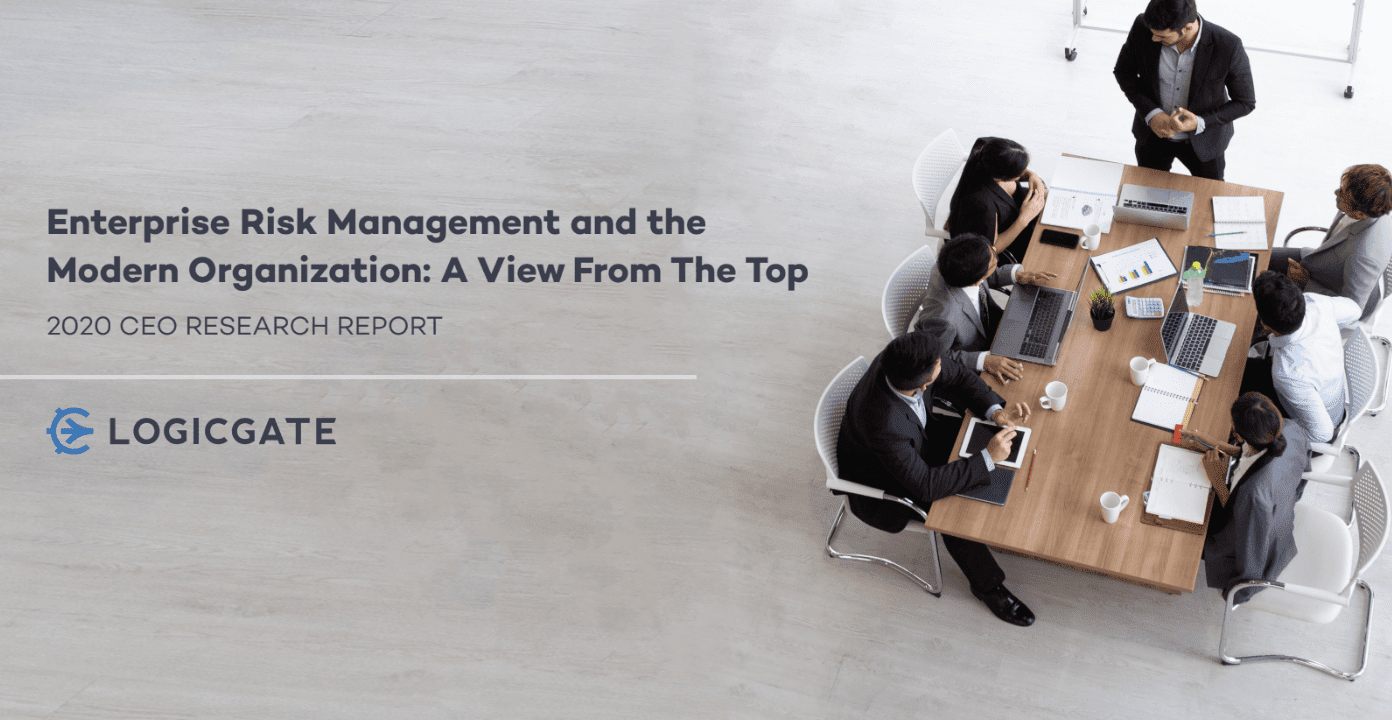CEOs are more stressed than ever.
The reason? It’s probably a lot of things, but a significant source of their worry stems from the risks their companies face on a daily basis. In the modern global economy, enterprise risks are accelerating in frequency and scope—and they show no signs of letting up.
LogicGate explored these issues in its inaugural ERM report Enterprise Risk and the Modern Organization: A View from the Top. To understand the CEO perspective on ERM, we went right to the source. We surveyed 100 chief executives to ask them how ERM programs operate in organizations today, from tactics and personnel to ERM’s place in the company’s broader strategy. We also asked them about the shortcomings that they see in their programs—now and in the future.
The Respondents
The chief executives we surveyed hail from a diverse array of industries, sectors, geographies, and company sizes.
- Employee size ranges from 100 to 10,000
- Company revenue ranges from $10 million to $25 billion
- Approximately 35% of respondents are in Financial Services (banking, insurance, investment services)
- Approximately 25% of respondents are in Healthcare (pharma, biotech, hospitals, and health systems)
- Approximately 25% of respondents are in Technology, Media, and Telecom (high tech, SaaS, FinTech, HealthTech)
The Findings
Three clear themes emerged from the survey findings:
- CEOs Recognize There’s a Problem – CEOs know that their companies face risks. They’re also aware that influences such as new global privacy regulations and the spread of the extended enterprise are causing the business world to change at an accelerating rate. New threats are emerging faster than ever before, and most CEOs profess little faith in the ability of their current ERM programs to keep up.
- There’s No One Size Fits All Solution – Even among companies that have an ERM program in place, there’s no consensus on what a successful program really looks like in practice, beyond the baseline features.
- 3) Despite the Obstacles, CEOs are Committed – About half of CEOs are extremely involved in their organization’s ERM strategy or program, with CEOs at larger firms reporting much stronger involvement. Further, most CEOs report using a number of ways to manage their ERM program with cloud software solutions being the most common. Still, 66% of CEOs want even more involvement.
It’s not uncommon for companies to face new and emerging risks on a daily basis, so it makes sense that CEOs would be hungry for more explanation and looking for creative solutions. Data breaches, financial losses, and reputation damage are splayed across the headlines every week.
Curious to learn more? Download Enterprise Risk and the Modern Organization: A View from the Top by clicking here.
